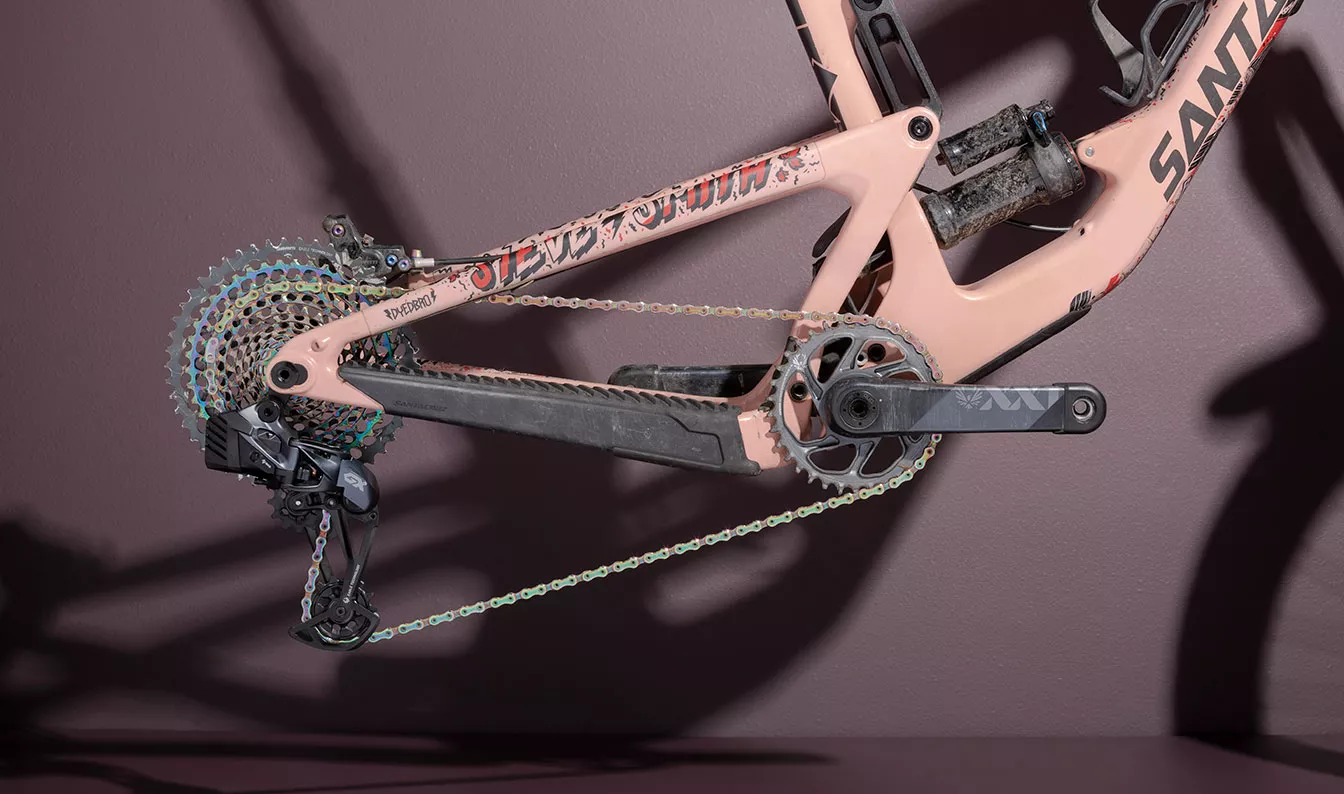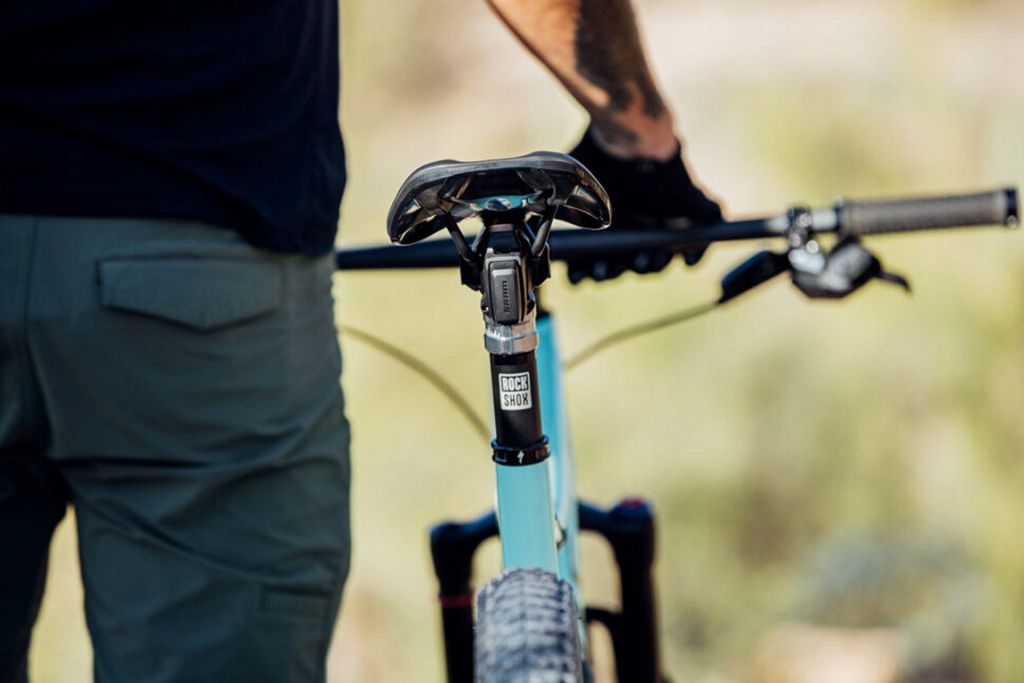The wireless tech boom stops at nothing, and for better or worse, it is coming to mountain biking in 2019 with a bang. We’ve seen early signs in the past years, but with the introduction of Sram’s AXS platform, things are about to speed up, and we will probably see other manufacturers follow suit with their wireless solutions.
What wireless innovations are coming in 2019 and where will they take mountain biking?
1. Wireless drivetrains
Drivetrains are going through a bit of a revolution lately. I’ve already covered the 1x v 2x debate in a previous post. Now, there are more changes coming with Sram dropping its fully wireless AXS system. It’s a 1x12 drivetrain that looks just like any other, except there are no wires, and the actuation happens electronically at the press of a button. This is the first time, as far as I can tell, that a manufacturer is bringing a mass market-ready wireless drivetrain system. We will have to see how others respond, but I think we will see more wireless systems come out soon.

Shimano does have the Di2 system, which is about 4 years old. It is electronic, but not wireless, so you must run a physical wire between the shifter and derailleurs. Despite this, it brings innovation in a different way, with its Synchro Shift system — a 2x11 that combines the simplicity of a 1x system with the gear range of a 2x one, bringing the best of both worlds. It does this by automatically adjusting the front derailleur based on the gear you choose in the back.
2. Wireless dropper-posts
Dropper posts are another obvious component that can be stripped of wires. I believe Magura eLect was the first to introduce a wireless dropper post and now Sram has added the RockShox Reverb to the AXS platform.

There are a few advantages to a wireless dropper post. First, it has a nearly instantaneous response. With a hydraulic dropper, like the RockShox Reverb, it’s also less prone to issues, since the hydraulic system is enclosed in the seat post. You can also swap these dropper posts between bikes easily since there are no cables to guide through the frame.
3. Wireless fork & shock controls
Being able to remotely control your lockout on both fork and shock is very useful. There are plenty of cable solutions out there, so you'd think the logical next step would be to make these levers wireless. But Fox decided to skip that altogether and introduced the Live Valve system, which adjusts the damping on both your fork and shock automatically. It takes 3 milliseconds to unlock your suspension when it senses you will hit an obstacle for the first time. It then keeps the suspension unlocked for a defined amount of time. And this period changes depending on if you are climbing or going down. It uses a 3-way accelerometer to figure this out. If you are going down, it will keep everything open for a longer period of time, if you are climbing, on the other hand, it will lock out much faster, so you don't lose momentum.
Cannondale had a similar prototype a few years back, but only for the fork, and it was much more complicated than what Fox introduced. Still, Live Valve is very expensive at the moment and probably only useful to performance riders.
What about wireless breaks?
This one is a bit tricky, and apart from a really rough prototype that came out a few years ago, I haven’t seen anyone taking this on. The obvious issue is, that breaks have to work at all times. Whereas a drivetrain that runs out of batteries is still bad, but allows you to get home in one piece, a break that simply stops working when it runs out of juice is a show stopper. The trick is to develop a failsafe that allows the break to operate in some limited mode at all times.
The second challenge is that we’ve become really accustomed to modularity in breaking with hydraulic breaks. A wireless system would have to have the same modularity in order to get adoption.
With that said, it’s not completely unthinkable, so let’s see if someone comes up with wireless breaks.
A fully integrated system?
I think there is a lot of potential in an integrated system. Imagine your seat post dropping, your fork lockout opening up and gears getting into a sweet spot for descends at the press of a button. Sure, some will say that there are situations when they need an unlocked suspension but the seat post up. All that should still be possible. I think it will come down to how well the interface is designed. It has to be simple enough to actually make riding better, and yet modular to work in edge cases. But the potential is there.
Sram is particularly well positioned because it owns RockShox and other component manufacturers. The batteries on the new AXS system are actually the same for the drivetrain and the dropper post. Maybe it’s a sign of more to come.
Diagnostics and riding recommendations
Another benefit of a fully integrated electronic system is its ability to collect data and serve you with diagnostics and riding recommendations. For instance, it could tell you to adjust your shifting or suggest how to tweak your suspension based on your riding style much like Quarq's ShockWiz. Since Quarq is owned by Sram, this could be the next addition to their AXS platform.
Still expensive, but prices will eventually drop
Wireless and electronic systems are still very expensive. The top-of-the-line Sram AXS XX1 will set you back $2000, and the X01 sitting one level below is only $100 cheaper. Shimano’s Di2 is about the same price.
Dropper posts are expensive as well. The AXS Reverb is a whopping $800 easily making it one of the most expensive dropper posts.
You also have to factor in the cost of batteries, which will lose their capacity over time and will need to be replaced.
With that said, much like with any other tech that catches on, prices could drop. The question is whether Sram or Shimano will be able to persuade enough people to purchase the expensive early models and justify further development.
Security concerns
As with any other wireless tech, people have already voiced concerns about security. Besides reliability, there is also hacking. This can be a particular concern for pro race teams, with rivals hacking into the wireless systems of other riders. I know it sounds far-fetched, but we thought mechanical motors hidden in the frames of bikes were far-fetched before they became true. Hopefully, all manufacturers are investing in the security of their solutions.
How will this change mountain biking?

Just like with other tech advances, you inevitably start thinking about how it’s going to change things. For me, mountain biking is about unplugging from tech. I don’t wear a heart rate monitor, I rarely track my trip on Strava, and my bike has 0 electronics on it. Don’t get me wrong, I’m not a tech hater; it’s just that I need a place and time to disconnect, and mountain biking gives me just that.
And yet, when I was thinking about wireless components, I found myself excited about the possibilities. Sure, you have to worry about additional batteries to charge, as if charging our phones, headphones, watches, computers, and tablets was not enough. But there are obvious positives, too. It declutters your bike, it’s easier to maintain, and I believe that with time, it will bring additional benefits, like a fully integrated experience across components and diagnostics. So, the jury is still out for me. I’ll try to get my hands on a bike with wireless components to fully experience it, and I’ll report back.



